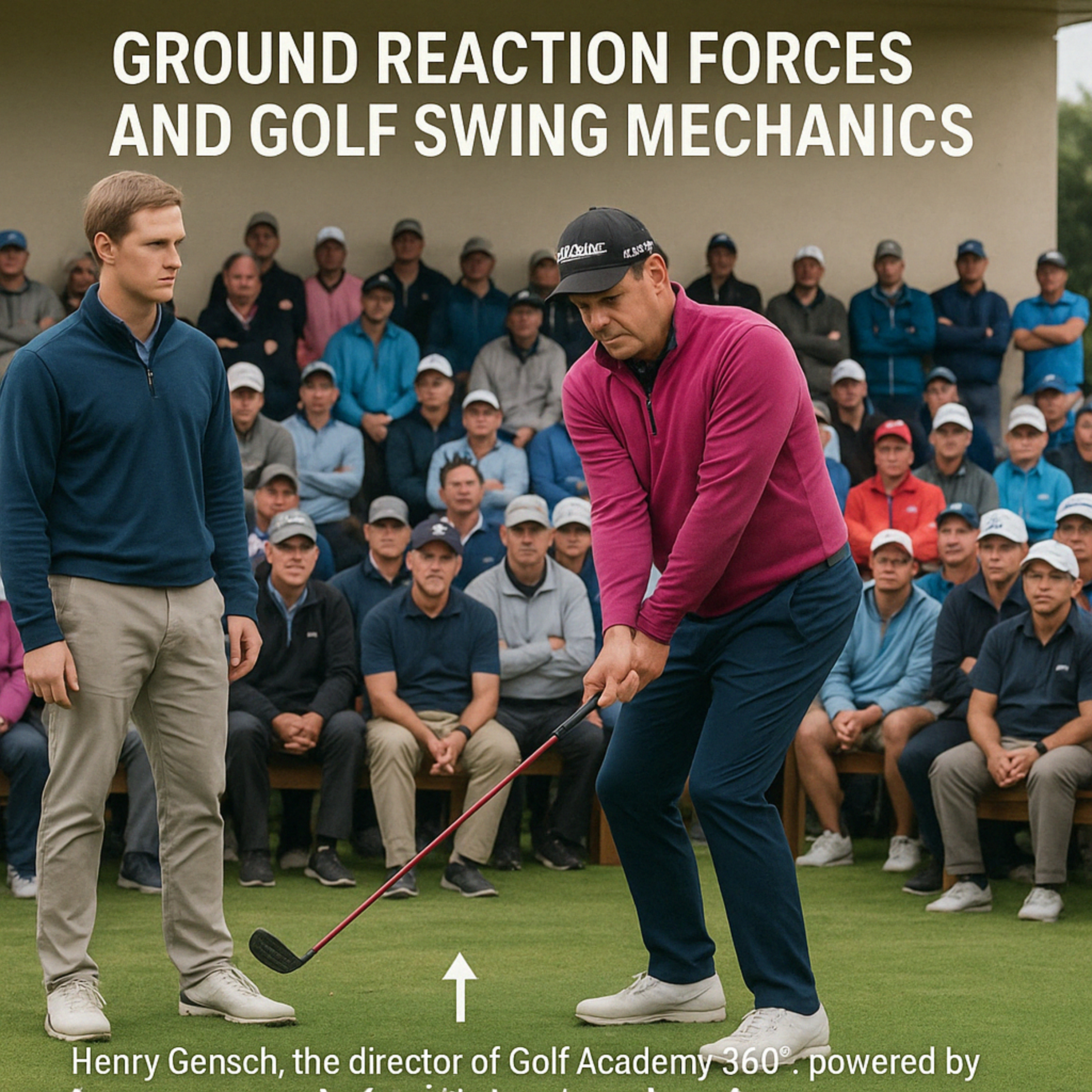#208 Ground Reaction Forces and Golf Swing Mechanics
- Author
- Golf247.eu
- Published
- Tue 29 Apr 2025
- Episode Link
- https://podcasters.spotify.com/pod/show/puttin-pro/episodes/208-Ground-Reaction-Forces-and-Golf-Swing-Mechanics-e31r93o
In this podcast, Henrik Jentsch, director of Golf Academy 360°, powered by Sportsbox, shares how understanding ground reaction forces—lateral, rotational, and vertical—can transform swing efficiency and consistency.
Drawing on decades of experience and a passion for helping golfers at all levels, Henrik explains how each force plays a unique role in the swing. Lateral movement shallows the club and initiates the kinetic sequence. Rotational force, applied through the hips and legs, creates power. Vertical force, generated by pushing off the ground, provides speed and space for the arms to extend.
He also highlights how each golfer’s body—measured through variables like wingspan, forearm length, and posture—affects their ideal setup, stance width, and foot positioning. Henrik stresses the importance of custom-fitting instruction to the physical makeup of each student. From ground interaction to posture adjustments, these details can determine whether a swing produces solid, repeatable contact or leads to inefficiency and inconsistency.
Throughout the session, Henrik demonstrates movements live, guiding his students through the sequence in a step-by-step manner. He illustrates how a small lateral shift creates the foundation of the motion, followed by rotation around the stabilizing leg, and culminating in a powerful vertical push upward through the body. Each step not only adds force but builds on the previous one, forming a chain of motion that’s smooth, repeatable, and athletic.
He also discusses the common errors seen when these ground reaction forces are misapplied—for example, opening the hips too early, delaying the lateral shift, or initiating vertical force prematurely. Each of these disrupts the kinetic chain and leads to shots that are either short, misdirected, or lacking compression.
Henrik emphasizes the importance of training with feedback systems, such as 3D motion capture and pressure plates, to visually confirm ground force usage. These technologies enable both coach and player to refine motion patterns in real time, accelerating learning and making the invisible forces beneath the feet visible, understandable, and trainable.
The message is clear: modern golf performance is built from the ground up. Correct use of ground reaction forces—starting with lateral shift, followed by rotational movement, and concluding with vertical push—is essential for efficient energy transfer, precise club control, and maximum distance with minimal effort.
Henrik’s holistic approach to teaching not only bridges science and sport, but also empowers golfers to better understand their own swing mechanics. With the right knowledge and training tools, every golfer has the ability to unlock their athletic potential and play the game with greater speed, confidence, and consistency.
